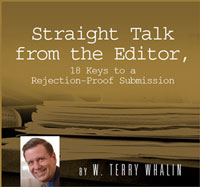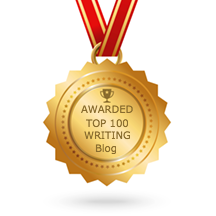Writing for An Audience of One
By Terry Whalin @terrywhalin
Have you ever been the only person in a large room with a speaker in the front? I recall speaking at a large writers conference with multiple sessions at the same time. I was teaching over several days and when one of my classes began, I had a single person listening to me. It was strange but I knew the conference was recording my session so I went ahead and spoke to the entire room (including the one person) and taught my session.
Some of my workshops have been completely full with every seat filled and people sitting on the floor in the back. Yet I have taught a few workshops with only one or two people. The experience is awkward but I’m glad to have someone in the room rather than just speaking an empty room (and the tape recording).
When you speak, you can look at your audience and interact with them. When you write, it is a different experience yet you still have an audience. How do you focus on the reader? It’s what I want to examine in this article.
Who is the audience for your writing? Why are you telling your story or article or novel? One of the key basics for every writer is to have a clear picture of your audience as you write words. For example, for these blog articles, I’m focused on anyone interested in publishing. I’m using the word in a broad sense whether you are writing online, in print, for magazines or books. There are a broad sweep of people who are interested in the various aspects of publishing.
From my years of writing, I have found it hard to write for a nameless crowd of people. Instead in my mind, I need to focus on an audience of one. Who is that person that is listening to you as you write? Can you visualize them sitting there reading your work or listening to you speak? Who is this person and what do they look like? What are they wearing and how are they reacting to your words? Are they leaning into the words and eager to see the next one or do they look distracted? What feelings is that person in your audience experiencing? Are they joyful or in some sort of pain or somewhere in between those extremes? Can you image their reaction to your words and your story? Keeping the audience in mind is a key element for every writer.
For example, a children’s book will have different words and a different tone depending on the age of that child in your audience. A fiction story will have a different audience than a nonfiction book. After I get the article written, I will read through it and make sure it will also work for a broader target audience.
One of the easiest places to learn this aspect of writing for a particular skill of writing for an audience is when you write magazine articles. When I worked at Decision magazine (circulation 1.8 million at the time), I was amazed that people would submit articles that were way off track of our audience and anything that we would possibly publish. With a glance, these types of submissions were rejected. It’s the same with your book pitches. If you are pitching a fantasy novel to an agent who has zero interest or experience in fantasy, then your pitch will be immediately rejected.
Do you set aside your writing for a bit then return to it and re-read it and make adjustments? Or maybe you have a critique partner who reads your work and gives you honest feedback? Or maybe you are a part of a small critique group in person or online that gives you feedback about the audience and your writing?
Writing is something that most of us do in isolation but each of us need feedback from others about our words--and we need to have that audience firmly in mind as we write. How do you determine your audience? Let me know in the comments below and I look forward to it.
Tweetable:
Labels: audience, book, critique group, listener, magazine, publishing, reader, Terry Whalin, The Writing Life, Writing for An Audience of One























0 Comment:
Post a Comment
That's the writing life...
Back to the home page...